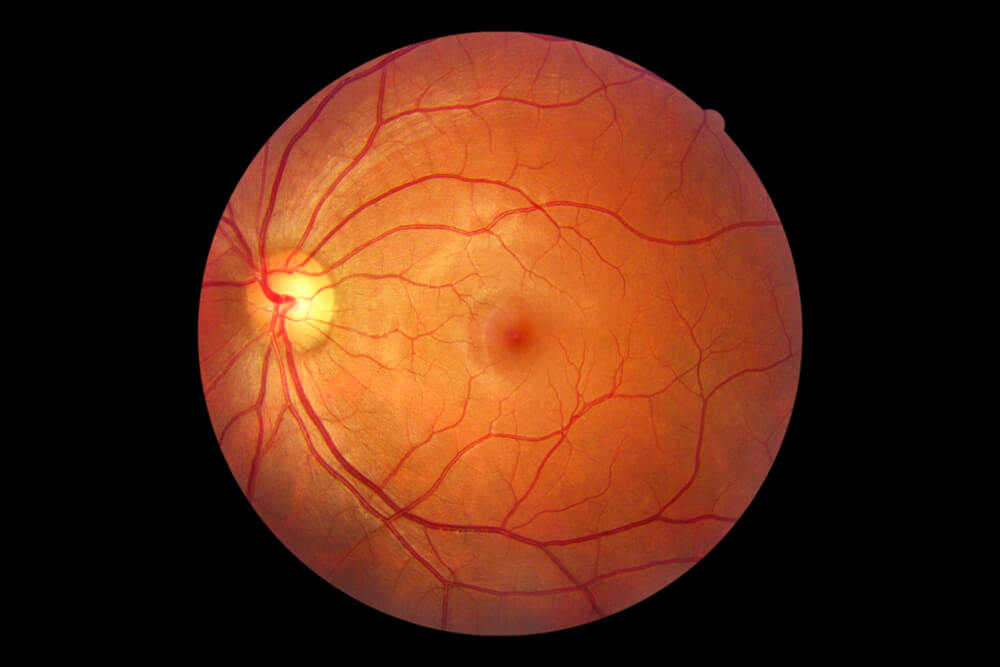What is retinal imaging, and just how often should you be getting it done?
Retinal imaging is a diagnostic tool that involves taking a digital picture of the back of your eye. Whether you’re currently experiencing eye issues or are at risk for certain conditions, retinal imaging is likely to be a key part of your healthcare routine.
Curious about how it works and what it detects? Our brief overview dives into the mechanics of retinal imaging, its capabilities in early disease detection, and reasons why it might be more essential to your eye health than you think. Read on to learn more about this safe, non-invasive method that’s paving the way for proactive eye care.

Retinal imaging is a modern diagnostic tool for observing the retina located at the back of the eye. It can be used for early detection of retinal diseases or as a way to monitor an existing condition. It can also be used to ensure that the retina and other core structures at the back of the eye are healthy and intact.
For this imaging technique, doctors use a camera that uses a scanning laser to take pictures of the retina, the optic nerve, and surrounding blood vessels. It is quick, easy, pain-free, radiation-free, and perfectly safe.
Beyond the basics, a retina picture eye exam may include the use of contrast dye, such as with fluorescein angiography (FA), which reveals the health of the blood circulation in and around the retina. Other types of retinal imaging exams include fundus autofluorescence (FAF), which makes use of natural fluorescence inside the ocular structures to highlight certain diseases, and ultrasonography, which images the retina using sound waves.
The type of retinal imaging technique your doctor uses is based on what they’re looking for and the current condition of your eye(s).
For a standard retina picture eye exam without contrast dye, your doctor will dilate your eye with special drops and then properly position your chin and forehead on a support structure. Once you’re in place, you’ll stare straight ahead into a special camera that is used to take digital retinal images.
The entire process for retinal imaging usually only takes a few minutes, though some techniques may take a little bit longer. In most cases, images are available immediately, and your doctor will discuss the results with you the same day.
Retinal imaging is extremely useful for the early detection of a wide range of eye diseases. This includes:
In addition to serving as a diagnostic tool, retinal images can also be used to monitor the progression of eye diseases and, in some cases, reveal a link between the retinal findings and systemic conditions like diabetes.
Based on the findings of retinal imaging, your provider may recommend additional retinal diagnostic procedures to gain a deeper understanding of your condition.
So, is retinal imaging necessary as part of your regular healthcare routine? That depends on factors like your age, your medical history, and your current risk factors.
If you’re at high risk of retinal disease due to factors such as myopia, family history, and certain medical conditions such as diabetes, your doctor may perform retinal imaging as part of your annual eye exam. The American Association of Ophthalmology recommends the following eye exam schedule based on age:
Keep in mind that even seemingly healthy individuals can benefit from a retina picture eye exam. It is a safe and non-invasive method for the early detection of a wide range of retinal conditions, many of which do not cause pain or visual symptoms in the early stages. Research also shows the benefits of regular retinal imaging for detecting future risk of retinal disease, meaning it’s as useful for disease prevention as it is for detection.
As part of our services, we offer a variety of innovative retinal imaging techniques designed to give us key insight into the health of your retina, optic nerve, and ocular blood vessels. If you’re not sure if you need retinal imaging, we recommend talking to your eye doctor during your next routine visit to discuss the process and find out if they think it would be beneficial. A retina picture eye exam is just one of several core diagnostic options for those who are experiencing eye concerns and a great tool for providing a clear picture of your retinal health.
Mid Atlantic Retina is a globally recognized retina practice with locations accessible to residents of New Jersey, Delaware, and Pennsylvania. Contact us today to request an appointment with a Mid Atlantic Retina specialist!